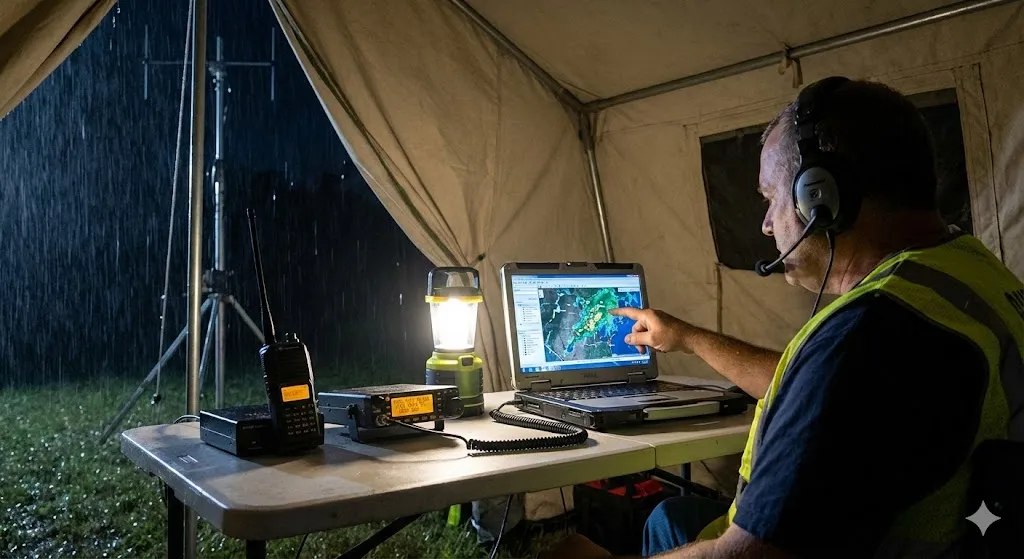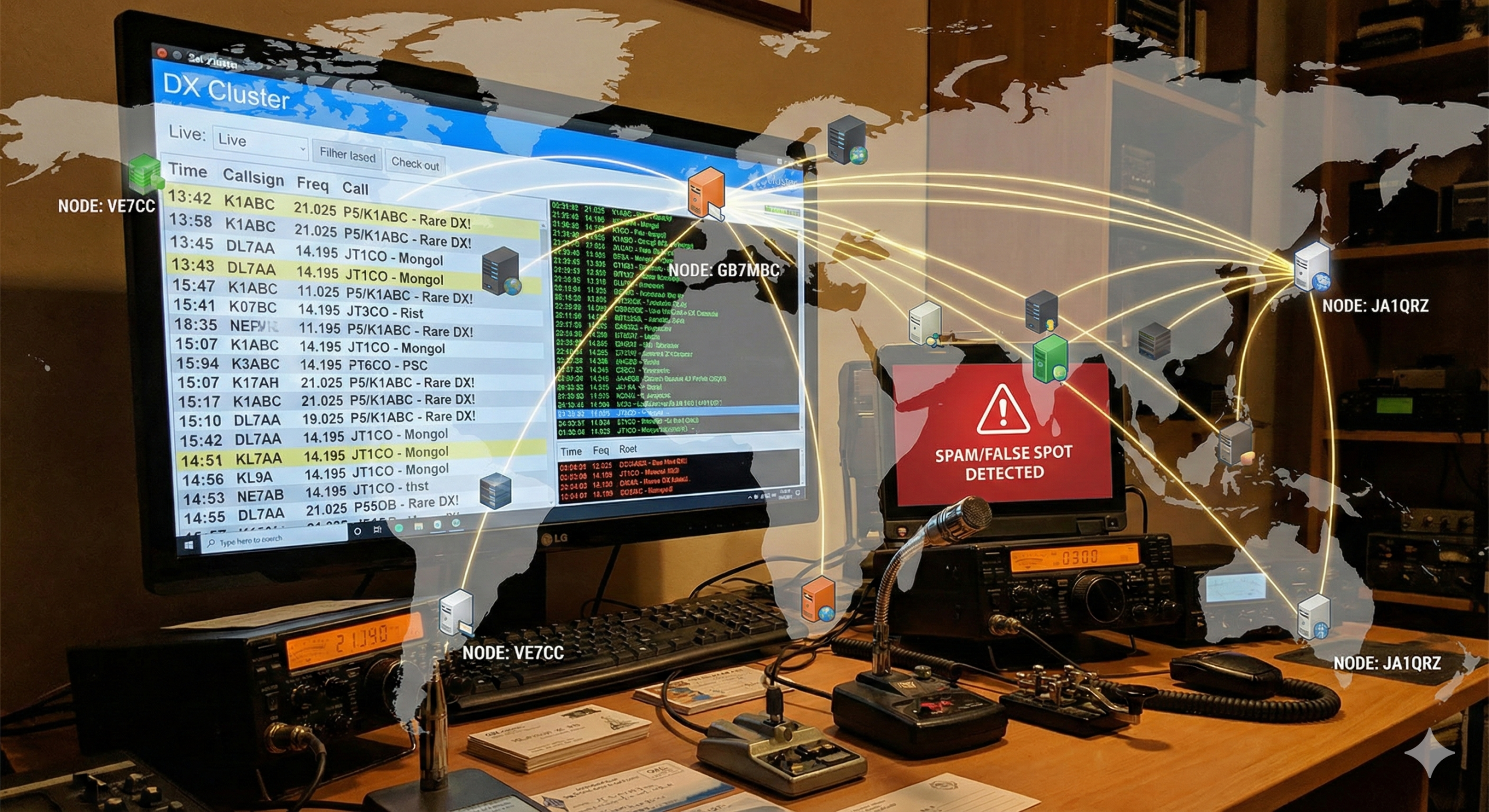QRQ = FUN
Quite often I am asked “How can you copy CW at 70 wpm and higher?”
Since it’s pretty insulting just to answer by saying “Practice,
practice, practice”, I normally wind up emailing back a synopsis on how I
learned to do it. Others have used different methods of achieving QRQ
copy by ear.
What I have to say on this subject is only my own personal opinion, which normally does not agree with everyone else!
I really don’t believe in the various methods of learning code. I
think learning to copy high speed code is much simpler than following
someone else’s method of learning to copy QRQ. What I am sharing with
you is things that I found to work for me.
There are some basic’s I think one MUST learn, and the very first one
is you must learn to copy ONLY in your head. That’s very important!
From there you can begin to increase your copy speed. So copying in your
head is a MUST. Jotting down notes or ‘key words’ is fine to remind you
of something you want to respond to during your QSO.
QSO’ing at 70 to 120 wpm is literally no different than having a
conversation on the telephone; you are just doing it using a different
language! No sending call signs (except as required) and no sending
‘bk’. You don’t do that on the telephone! Speaking on a telephone is
operating duplex, therefore why not do the same thing on CW?
A second most important thing you must do is have a radio that has
excellent full QSK at high speeds. Simply because when operating QRQ,
you MUST do it in duplex! You don’t stop and take notes when your
conversing on the telephone, so why do it when your operating QRQ? The
radios that I know of that can run full QSK at speeds over 100 wpm are
the Ten Tec Corsair II and the Icom IC-781, and they do it flawless. In
my opinion, full QSK is not at what speed you can hear another signal
between dots, but at what speed can you hear your fellow ham trying to
break you! Hearing between dots is a fine criterion for speeds below
about 40 wpm, but is inconsequential over 60 wpm. Unfortunately the more
digital circuitry that is added to modern transceivers, the less high
speed QRQ capable they become.
All high speed code (above about 55 wpm) is sent with a
keyboard/keyer or a computer keyboard, simply because one just cannot
consistantly send ‘clean’ code by hand on a key. Consistently ‘clean’
code makes for easier copying! I’ve been a CW operator for over 55 years
but I am not one of those ‘old goats’ who claim that sending CW by any
other means than using your had is not ‘real’ CW. ‘Real’ CW is a dot
and a dash, no matter how you send it. The idea here is how you copy
QRQ, not how you send it!
Most computer programs that are capable of generating CW are, for
some reason, not designed to exceed about 99 wpm. And most computer
programs generate CW either via a serial port or a parallel port. Using
these I/O ports causes an inherent problem for smooth CW generation. A
computers CPU produces random (to us) interrupts which almost always
stops activity in any I/O port FIRST! This leads to a ‘stutter’ sound in
generated CW coming from these I/O ports. VE6YP, who is the author of
the program I’ve been using for close to 10 years, is the only program
author I know of who has found a solution to this problem. In his
program, YPlog, he generates CW via the computer sound card, which is
never interrupted by a computers CPU ‘house-keeping’. The user builds a
very simple audio detector and transistor switch to key his radio. This
system works very good to over 160 wpm.
The reason you first want to learn to copy in your head only is
because when you get to speeds around 50 to 55 wpm, you have to teach
your brain literally to change it’s method of interpreting code.(And it
takes a while to do this!) Below about 50 wpm, you are still hearing a
dot and a dash to form a word. When you are copying at 60 wpm and
higher, you do not consciously hear a dot and a dash, you literally hear
a word. At that time too, you begin to have to be in, what I call, the
‘flow of the conversation’, just like you are when your talking on your
telephone. If you send me code groups at 70 wpm, I could not copy most
of them, but if you and I are in a converation at 70 wpm or higher, THEN
I can copy pretty solid.
To increase your copy speed, I recommend a code reader…and don’t be
shocked by that! The reason I recommend a code reader is because the
process of learning to copy from about 50 to 60 wpm is where you
literally have to teach your brain to copy code in a different way. The
problem at these speeds is if you miss a word, your brain automatically
freezes and tries to ‘guess’ at what that one missed word is. While the
brain is trying to decide what that one word is, many more words go
flying by, and you actually get very confused and lose track of what is
being sent to you. When you start using a code reader, a first you’re
going to just read the screen, but subconsciously the brain is
associating the dots and dashes with what your reading on the screen.
The more you do this, you will find that the less you read the screen,
but only glance at it when you miss that one word! This gets you over
that ‘brain freeze’ that is caused by missig just one word! Once you get
to copying around 60 wpm, when you DO miss that one word, your brain
realizes it, but then just continues to copy, ignoring or filling in
that one missed word.
Don’t worry about a code reader being a crutch, simply because when
you get to where you can copy around 60 wpm, you will find that you can
then copy code better than a code reader! A code reader is not very good
at handling high speed code in the presence of normal band noise of
your receiver. About 60 to 70 wpm and they are not capable to keep up
anymore because of noise crashes, but your brain can easily filter out
the noise. A code reader is an ‘aid’ to helping one learn to copy code
faster, it is NOT a crutch!
[[just for info: Although you will not be conscience of
copying dots ad dashes, if the sender mis-spells a word, somehow your
brain will notice that. Say the sender sends the word ‘will’ as w’E’ll,
your mind will notice that one dit that was missed, but you will have
trained your brain to ignore that one missed dit, and it will continue
copying. I’m not truely sure of this but I think somewhere above about
70 or 80 wpm, since your mind is now really in the ‘flow of the
conversation’, you probably are not literally copying every word that is
sent to you, but your brain is copying enough to make sense out of what
is being said!]]
Two big things about QRQ:
1) You HAVE to make it just another FUN
thing you want to do with your hobby.
2) You are not going to learn to
do it over night! But anybody can learn to do it.
I got started doing QRQ sometime in the late 60’s when I heard two
hams talking to each other on their regular skeds on 40m, at 100 wpm. I
thought it was just very fascinating, and just decided that was
something I WANTED to do. And it took me about a year to go from 30 wpm
on my keyer to over 60 wpm. That includes the time it took me to change
from a QWERTY keyboard to a Dvorak style keyboard. The neat and fun
thing I found, is that once you get to where you can copy between 60 and
70 wpm, your mind seems to just open up to copying QRQ. Going from 60
wpm to say, 100 wpm, seemed to be a breeze compared to retraining my
brain to get through the 50 to 60 wpm ‘brick wall’ we all have to go
through.
I really don’t know how fast I could copy, but I used to have QSO’s
with KB9XE and NU2C at about 120 wpm and could fully understand what
they were saying. NU2C tested me once and he would send me two
questions, which I had to answer both, then he would go up about 5 wpm .
Finally at 145 wpm, I got only one of his questions! I have read that
recently a German ham did copy a call sign being sent my RUFZ (a high
speed competition program) at 200 wpm! Copying CW at high speeds, either
145 wpm or 200 wpm, is one thing, having a conversation at those speeds
is something quite different.
Again, two things. You have to make this a fun-thing, you have to
want to do it, and it can get pretty frustrating at times. You have to
be willing to spend the necessary time on the air working at improving
your copy. That is the only way I know of that you can do it, as there
are no short cuts. Interestingly, of the maybe 10 hams that I know that
operate at high speeds, none of the have any interest in records or
reconition for their QRQ ability. They all simply do it for the
enjoyment of it.
from http://sites.google.com/site/tomw4bqf/copyingcwover70wpm






Post Comment